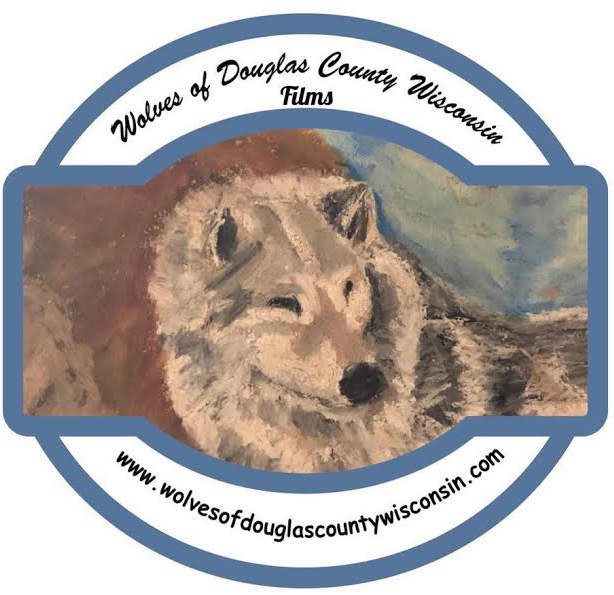Many people mistakenly think that the term advocate only applies to people doing wolf advocacy work full-time or professionally. They associate advocates and activists with people who lead protests or lobby daily at the state Capitol building as a nonprofit organization. However, every decision you make holds political weight. Therefore, advocacy is a practice that all of us can engage in without paying, donating, or belonging to nonprofits.
We all have gifts that we can use to advocate for wolves based on our values and beliefs. Accomplishing advocacy and activism requires no formal degrees or training and is accessible online.
Using my voice, I wrote letters to the editor, contacted the press, and used social media to express my concerns for Wisconsin’s wild wolves. I used my money (except for making a film) and remained independent from any nonprofit/nonprofts.
I worked independently with like-minded individuals. These individuals remain faithful to the cause and work for the same goal: to educate and advocate for gray wolves.
This approach works best for advocating; one can remain independent while making social changes for the cause. Yet, to collaborate, one should work with like-minded, independent individuals. Investing time and energy into forming or working for a nonprofit organization is unnecessary.
In the good old days, we protested at a mine to save an endangered dragonfly without going through a nonprofit. We called each other and set up when and where to meet. We did not have a nonprofit organizer tell us what to do. We just talked to each other. Direct actions like protests are powerful ways to show up and are just one way of advocating. They are considered participation and collaboration.
Since 2011, I’ve seen hundreds of wolf advocacy nonprofits spring up. Too much information is guaranteed to keep advocates confused and afraid, but I’m not saying all nonprofits are bad ideas. Some nonprofits have survived the test of time and have yet to be what I call the carpet baggers on the scene to make money. Who has encountered these types of nonprofits coming away feeling confused and angry? I’ve been one such individual, and it changed my perspective.
We all have strengths. Mine are writing, collaborating with like-minded individuals, and filmmaking. By like-minded, I mean focused on the cause, professional, and ethical. When you’re feeling uncomfortable while volunteering through a nonprofit organization, trust that feeling. It may be telling you it isn’t a place for you. Trust it and move on. After all, you are a volunteer.
Learn as you go. Advocating is part-time and volunteer work. I recommend getting to know those you are attracted to because they are like-minded individuals—as I have already stated, the ones who are professional and ethical. You will learn from your mistakes and grow.
Be focused. That’s a big one. I’ve learned most to address the problem and work to solve it. I’ve watched nonprofits perpetuate the problem, and that was a turnoff. Perpetuating the problem and not solving it was a way to get another donation from me. The problem can be complex and not easily solved.
Wolves in Wisconsin face tremendous obstacles. The problem is complex, consisting of people and wolves. Wolves on the landscape near farms can be one of these problems. An advocate could focus on this problem to help solve it. For example, I learned all I could about mitigating problems of wolves and livestock and helped get Foxlights, a nighttime predator deterrent, to the USDA. Advocates can talk with Wisconsin Department of Natural Resources Wildlife Damages Specialists to discover how they can help. Again, use your strengths, and if this is one, like researching and fact-finding, then do it.
Make sure you vote for like-minded representatives. That is key to advocating for change. Volunteer to help get them elected. Find out who your local, state, and national representatives are and keep in touch with them. Write letters, tweet, or call local and federal politicians. Keep track of any proposed legislation at your city, state, and federal levels. When you learn about policies you align with, write, tweet, or call in support. Likewise, when you find a law you see as harmful, write, tweet, or call in your dissent.
There are ways to avoid burnout when you are working for the cause.
I find creative ways to process and express my thoughts. There have been times when all the bad news about wolves gets to me, and I read, research, and talk. Things can get heavy and emotional. Having outlets for these feelings is essential. I turn to writing most often—hence this article. Art and filmmaking are beautiful ways to express the depths of my experience. I made a film that represents my values about wolves in Wisconsin.
The call to action here is to be authentic in naming your values and concerns and engaging with like-minded individuals about the cause to the extent that you are capable and safe doing so. Being safe is most important. If you are involved in conversations with persons with the opposite view, remember you can only plant a seed. Do this with the intent to educate, not argue. Playing the victim and laying blame can only hinder any progress. Walk away from aggression. Do align your values in conversations that open the door for the change you want to see.
Share and retweet content on social media. The Internet has allowed us to share issues and solutions in seconds. Hashtags have helped people gather virtually on—the Internet to create a movement and inspire the masses to engage in wolf advocacy.
I cannot stress enough the importance of finding like-minded individuals. Find mentors and guides—lots of them. Notice which leaders you feel called to that share your values. Which ones challenge you and offer you opportunities for growth? Again, explore different mediums—podcasts, books, Instagram influencers, educators, and so on.
In conclusion, advocacy is a practice that all of us can engage in without paying, donating, or belonging to nonprofits.


Leave a Reply